How to Sleep With Curly Hair Without Ruining It
Updated on
This post may contain affiliate links. As an Amazon Associate, we may earn from qualifying purchases.
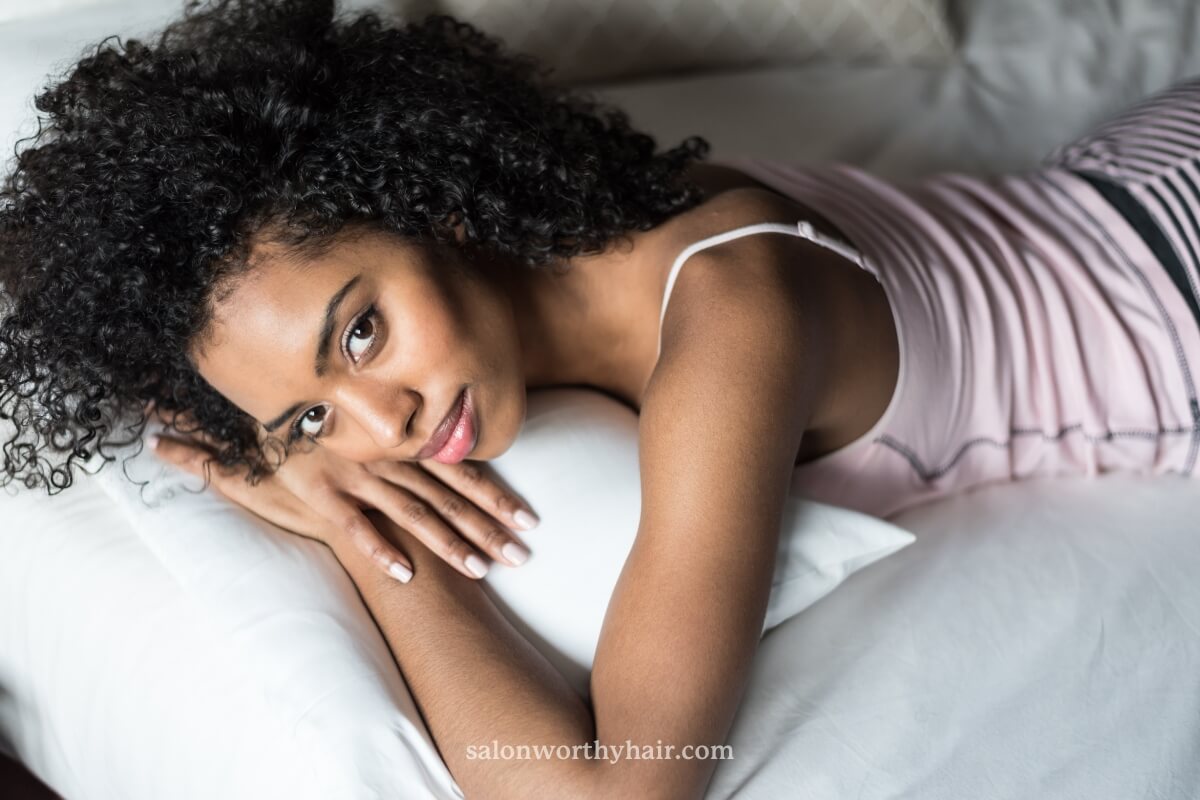
Ah, the morning after a good night’s sleep – except for some of us with curly hair who wake up looking like we’ve stuck our heads in a blender!
Wonky curls, frizz, and knots …
It’s like curly hair has a mind of its own, and it’s not on our side in the morning.
But fear not, my curly-haired friends, for there is hope yet!
With a little effort before bed, you can wake up with bouncy, beautiful curls ready to take on the day – or at least not scare the cat when you stumble into the kitchen for your morning coffee. 🙀
Let me show you how to sleep with curly hair without ruining it.
In this article, I’ll cover pre-sleep hair care tips, sleep-in hairstyles, morning hair care tips, troubleshooting frizz and flatness, and more.
Let’s dive in!
Table of Contents
- 1. Prep Your Curls Before Sleep
- 2. Sleep in a Position That Won’t Crush Your Curls
- 3. Use a Silk or Satin Pillowcase
- 4. Embrace Sleep-In Hairstyles for Curly Hair
- Sleeping With Wet Curly Hair – Considerations
- How to Refresh Your Curls in the Morning
- Hair Products to Consider
- Troubleshooting Frizzy Curls and Flatness
- How Are You Sleeping With Your Curls?
1. Prep Your Curls Before Sleep
To prevent your curls from messing up overnight, follow this essential pre-bed routine to start:
Avoid sleeping with wet hair because wet hair is fragile, and moisture can encourage fungus and mold, making your hair smell musty or mildewy. It can also cause webbing and wet frizz, which can affect curl formation in the morning.
Sleeping with wet hair only makes sense when doing an overnight treatment like deep conditioning or hot oiling.
But having said that, I know most of us don’t have time to wash our hair in the morning. That’s why washing, styling, and plopping the hair before bedtime is a common habit among curlies.
If that’s your only option, let me help you with some tips to make your wash days work in favor of your curls:
- Wash your hair at least 2 hours before bed.
- Use a microfibre towel to soak up the excess water.
- Add a lightweight conditioning product when your hair is semi-damp.
- Allow your hair to air dry without getting frizzy.
A lightweight conditioner will maintain your curls as they dry, and keep them intact while you sleep, instead of spreading everywhere.
If you sleep with dry hair, apply a small amount of Boucleme curl cream (mixed with a few drops of warm water) from mid lengths to the ends. It will keep your curls gathered and hydrated at night.
2. Sleep in a Position That Won’t Crush Your Curls
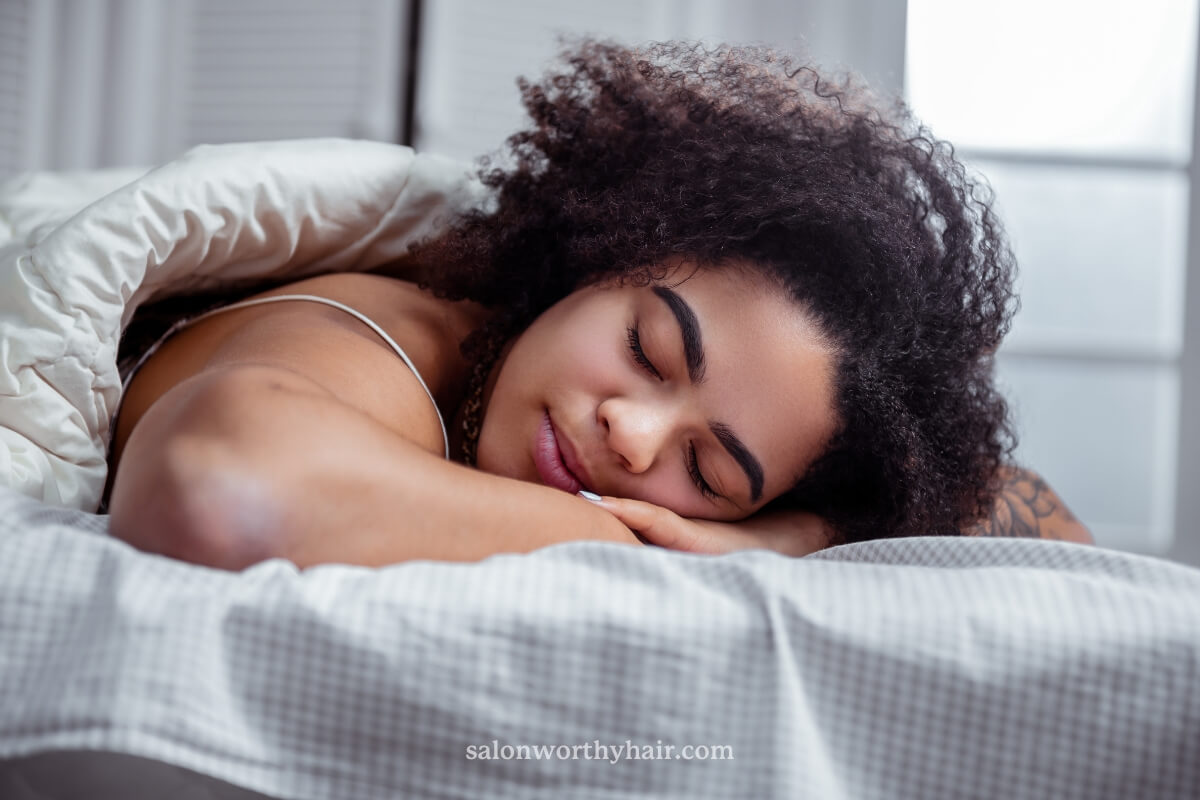
Sleeping on curly hair can flatten your curls due to the weight of your head compressing them against the pillow.
The best position for sleeping with curly hair is on the side or the stomach because these positions put little pressure and friction on the hair.
When you sleep on your back, the weight of your head pressing on your curls for almost 8 hours will flatten your curl pattern.
Sleeping on your side or stomach allows your hair free space into positions where your head won’t be crushing it, reducing resistance between your hair, head, and sleep surface.
If you have a habit of sleeping on your back, try using a neck support pillow to relax your curls. A neck support pillow elevates your head and neck, giving your curls free space.
Memory Foam Neck Pillow
3. Use a Silk or Satin Pillowcase
The best type of pillowcase for curly hair is one made of satin or silk. These materials are much smoother and gentler. They create less friction and tugging on the hair than cotton pillowcases, meaning your curls are less likely to be pulled, stretched, or damaged while you sleep.
Silk and satin materials can particularly benefit people with long curly hair by allowing the hair to glide over their surface instead of getting tangled and caught when tossing and turning around.
Cotton pillowcases, on the other hand, have a velcro-like effect on hair due to the rough and textured surface of the fabric. When hair rubs against a cotton pillowcase, it gets caught in certain positions instead of gliding, causing it to retain that shape until you wake up.
Cotton is also moisture-absorbent. It can pull natural moisture from the hair and skin, leading to dry and brittle hair – a problem some people with curly hair already struggle with.
I’ve been using a silk pillowcase for years, and it definitely helps preserve the shape of my curls for minimal effort-styling in the morning.
Another alternative is to wrap your hair in a silk or satin scarf before bed so your curls don’t rub and crease on a cotton pillowcase.
SLIP Silk Pillowcase
4. Embrace Sleep-In Hairstyles for Curly Hair
Now that you’ve prepped your hair and bedding, it’s time to choose a sleep-in protective hairstyle to prevent your curls from falling flat in the morning.
Here is a list of protective hairstyles you can try:
1. The Pineapple Method for Curly Hair
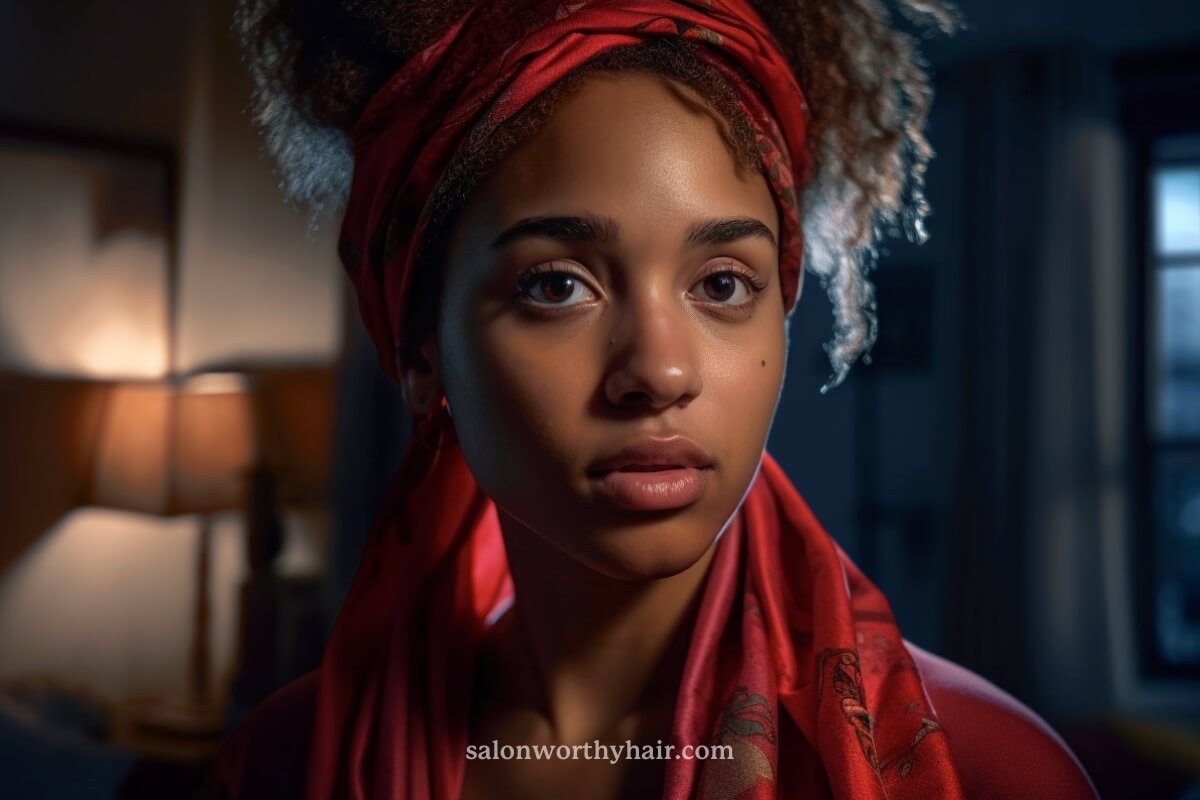
The pineapple method is a popular hairstyle for preserving curls overnight. It is considered one of the healthiest hairstyles to sleep in because of its loose and low tension that protects curly hair.
The method involves gathering the hair on top of the head and securing it with a hair tie. It’s called “pineapple” because the gathered hair resembles the shape of a pineapple.
The pineapple method works best for people with long and loose curls. For those with tighter and shorter curls, the pineapple method may not work, as the curls may not stay in place at the top of the head.
Here’s how to do it:
- Gather your hair into a high, loose ponytail on your crown using a soft hair tie, scrunchie, puff cuff, or invisibobble. Avoid hair elastic. Ensure the ponytail is not too tight or too low to avoid indentations or frizz.
- You don’t need to gather all your hair. You can leave some strands loose at the front or the sides if you have long hair to create a more natural and flattering look.
- To protect it further, you may cover your hair with a satin or silk bonnet or scarf.
- When you wake up, gently remove the bonnet or scarf and release the ponytail. Shake or fluff your curls with your fingers or a wide-tooth comb, and apply a curl-refreshing spray or cream as needed.
The pineapple method works on wet or dry hair, but it is recommended not to sleep with soaking wet hair. If you wash your hair at night, let it dry first and do it with damp hair instead.
2. Twists or Braids
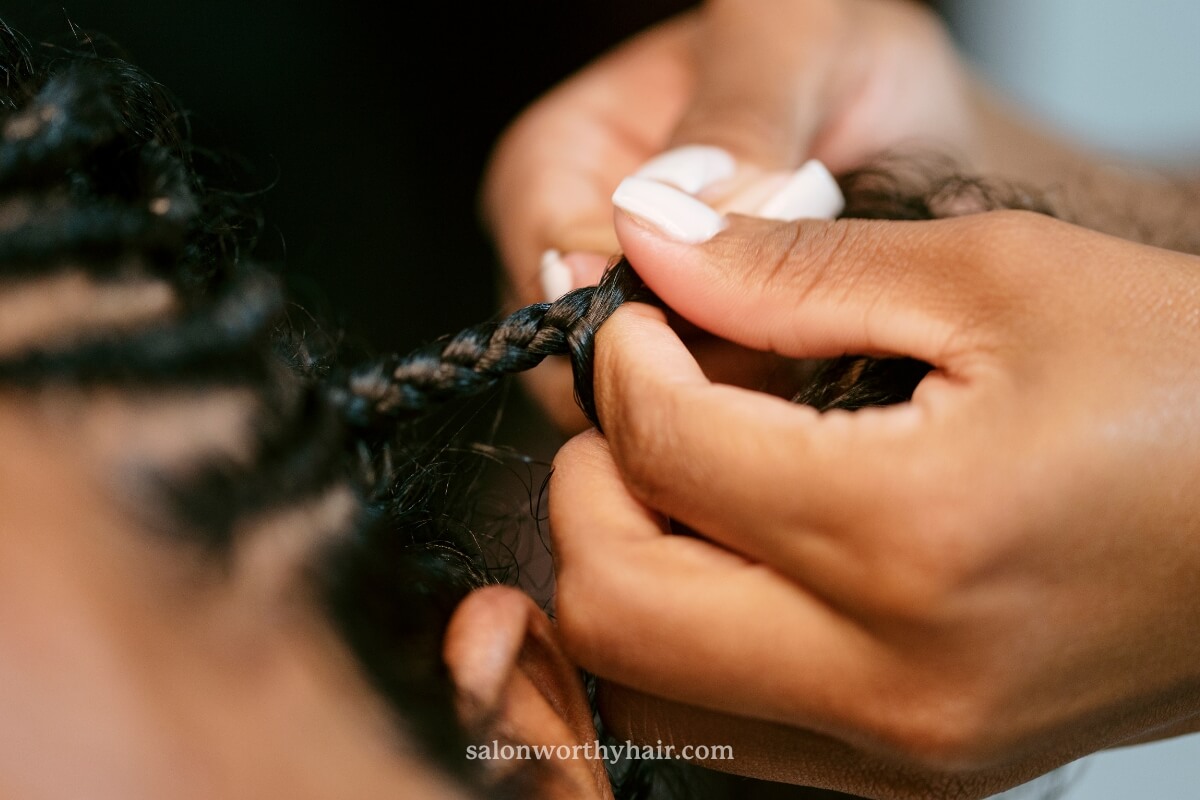
Twists and braids are protective hairstyles that enhance textured hair while reducing frizz.
They create structure, definition, and hold and usually involve applying tension to the hair strands. For that reason, twists and braids are better suited for coarse and thick hair because these textures can withstand more tension than fine and thin hair.
Twists are created by dividing a section of hair into two equal parts and then twisting one part over the other until you reach the ends of the hair. This process is repeated throughout the hair until all sections are twisted. Depending on the desired style, twists can be done in different sizes, from small to larger ones, to create tighter, more defined curl patterns or loose waves.
Braids are created by dividing a section of hair into three parts and weaving them over and under each other until the ends of the hair. This process is then repeated throughout to create a braided style. Braids can be in different sizes and styles, such as two-strand twists or cornrows, depending on the desired look.
3. Two-Strand Twists
The two-strand twist is a natural hairstyle for curly hair that involves twisting two sections of hair together to create a defined curl pattern. To create a two-strand twist, divide a small section of hair into two equal parts. You then twist one section of hair over the other section and continue twisting both sections until you reach the end of the hair. This process is repeated throughout the hair until all sections are twisted.
Two-strand twists are more effective for type 3 (curly) and type 4 (coily) hair. This is because tighter curl patterns naturally tend to coil and twist, making them ideal.
People with tighter curls like this style for sleeping because it prevents flattening and frizzing, making styling the next day easier.
4. French Braids
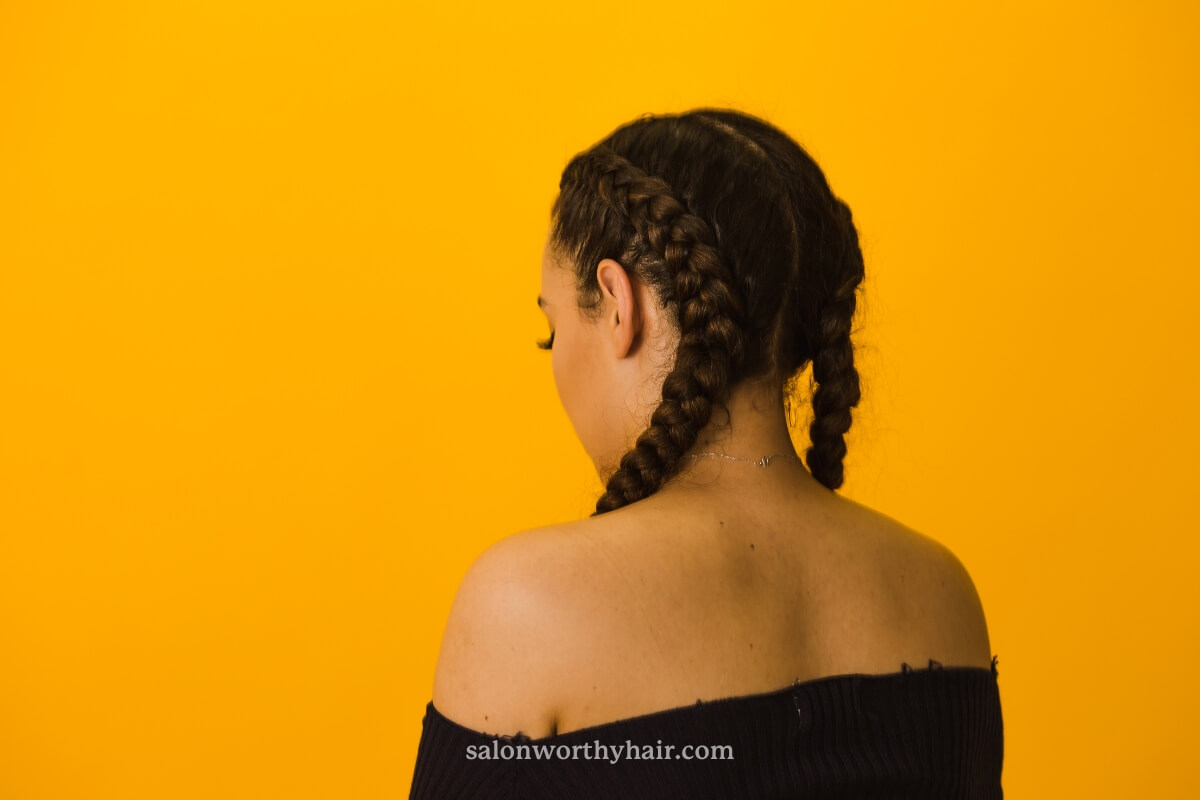
The French braid is a classic hairstyle that involves weaving three sections of hair together in a continuous braid. It works best for wavy and curly hair (but not coily and kinky) because the natural texture allows the braid to grip the hair and hold it in place.
To create a French braid, you start by dividing a small section of hair into three equal strands at the top of the head. You then begin braiding the hair by weaving the left section over the middle section and then the right section over the middle section, continuing this pattern while adding more hair to each section. Once all the hair is added, you can finish by braiding the remaining hair to the ends.
People with curly hair like to do French braiding for sleeping because:
- It distributes weight evenly:Unlike other braiding techniques, which require tension in certain areas of the scalp or hair, French braids distribute weight evenly across the entire head. This helps to prevent the hair from becoming pulled or stretched in one area, which can lead to breakage and frizz.
- It maintains volume:French braiding helps maintain volume and definition in the hair. This is particularly helpful for people with fine or low-density hair who may struggle with flat or limp curls.
- It’s comfortable to sleep in:This hairstyle makes the hair lie flat against the scalp and doesn’t create uncomfortable bumps or indentations.
- It creates unique curl patterns:Depending on how you braid your hair, French braids can help to create unique and interesting curl patterns. This can be fun to experiment with your curls and create new looks without a curling wand.
- It keeps the hair moisturized:By braiding it while it’s wet, you are locking in moisture to keep it hydrated.
5. Pin Curls
Pin curls is a sleep-in hairstyle for type 2 and type 3 hair that creates voluminous and bouncy curls overnight. It helps to maintain and enhance the curls’ shape and volume while you sleep.
Divide your hair into small sections and curl each around your finger or a small rod. Secure the curl with a bobby pin or a duckbill clip. Repeat this process for all sections, and then cover your hair with a silk or satin bonnet.
6. The Top Knot
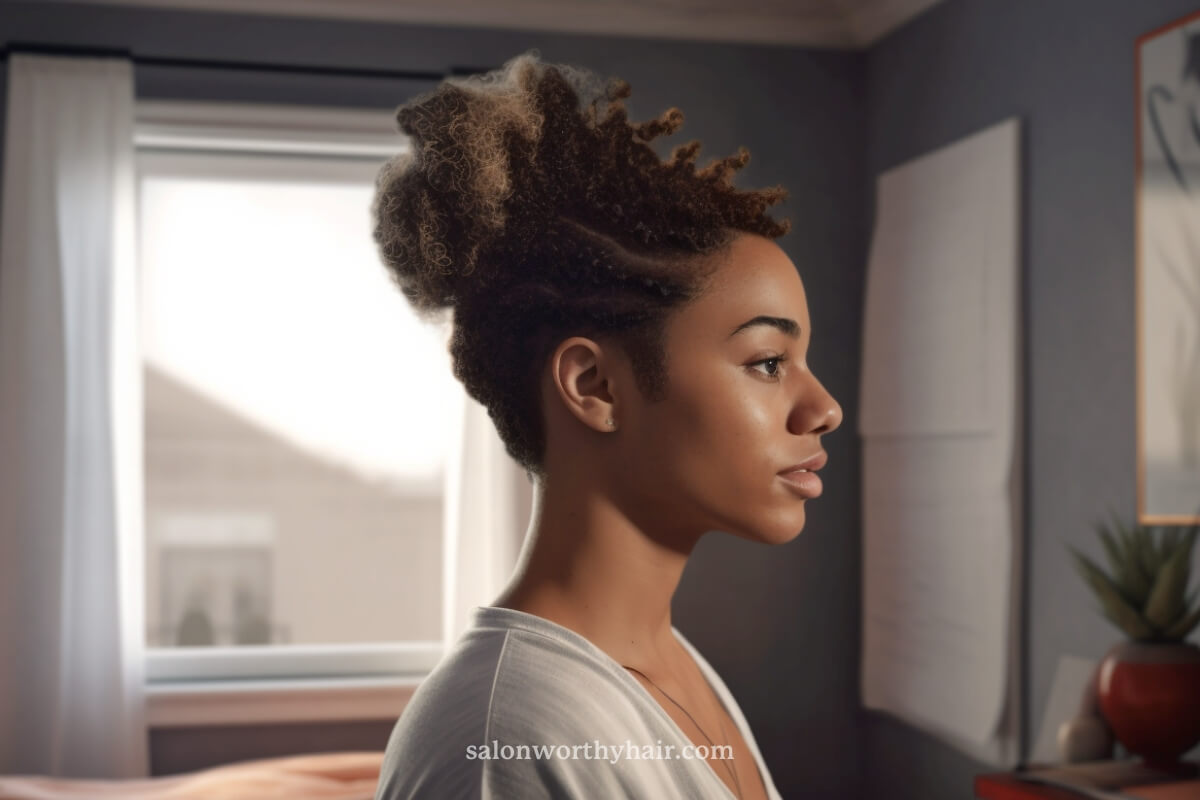
The top knot hairstyle involves gathering your hair into a bun at the top of your head. This hairstyle can be customized to create different looks, from a high topknot to a low bun. It can also be adjusted to suit your personal preference and hair type.
Reasons to do the top knot:
- It keeps your hair out of your face.
- It helps to preserve curls while sleeping.
- It’s comfortable to sleep in.
- It’s easy to do.
- It works for different hair lengths.
Instructions:
- Flip your head upside down and simply pull your hair into a ponytail at the crown. Make sure the ponytail is not too tight.
- Twist the ponytail clockwise until it starts to coil on itself.
- Coil the twisted ponytail around the base of the ponytail until it forms a bun shape.
- Use bobby pins to secure the bun in place.
The size and placement of the top knot can be adjusted to suit your preference and hair type. For example, if you have shorter hair, you may need to create a smaller top knot or a low bun instead.
7. Bantu Knots
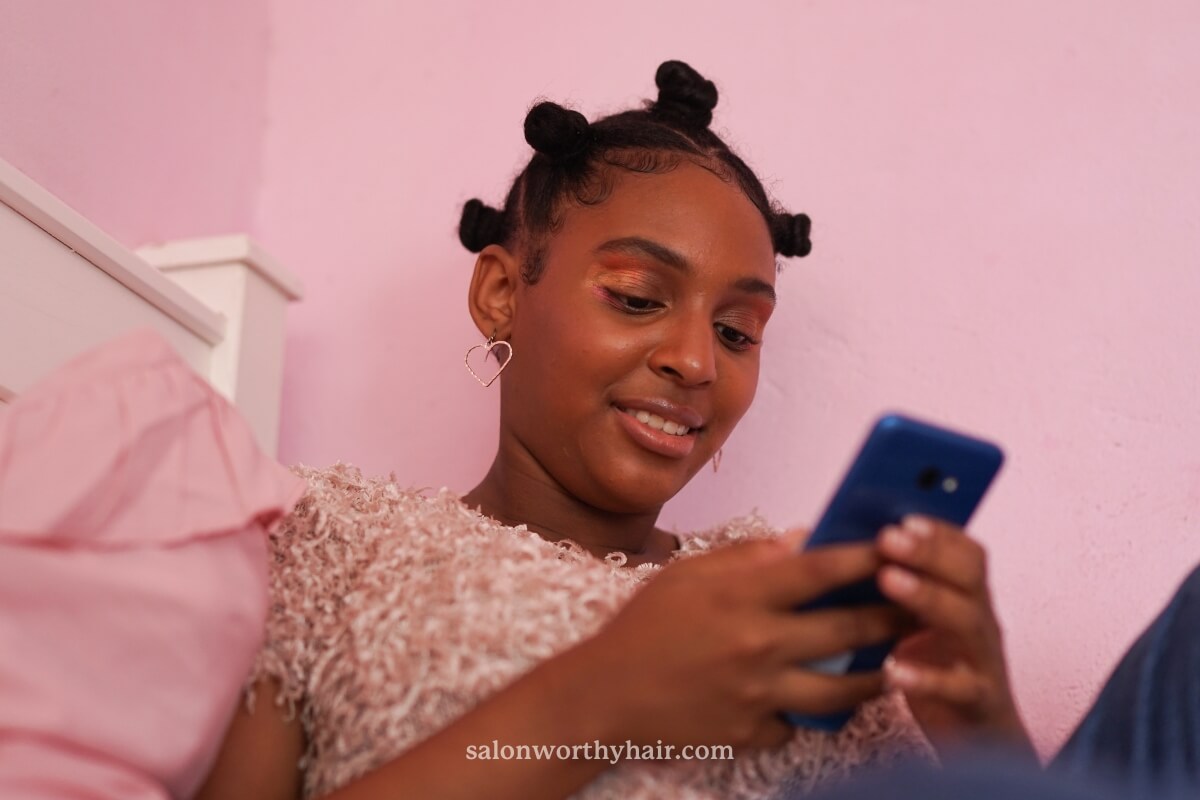
Bantu knots are a traditional African hairstyle that involves twisting sections of hair into small knots and securing them to the scalp. This hairstyle is ideal for people who want to stretch and elongate their curls while they sleep.
Bantu knots are more effective with type 3 and type 4 hair because the natural texture allows the hair to twist and shape into knots and hold its shape well. In contrast, type 2 hair (wavy) is too loose for tight knots that can stay intact.
For type 2 hair, consider hairstyles such as pin curls or top knots instead.
8. Headbands
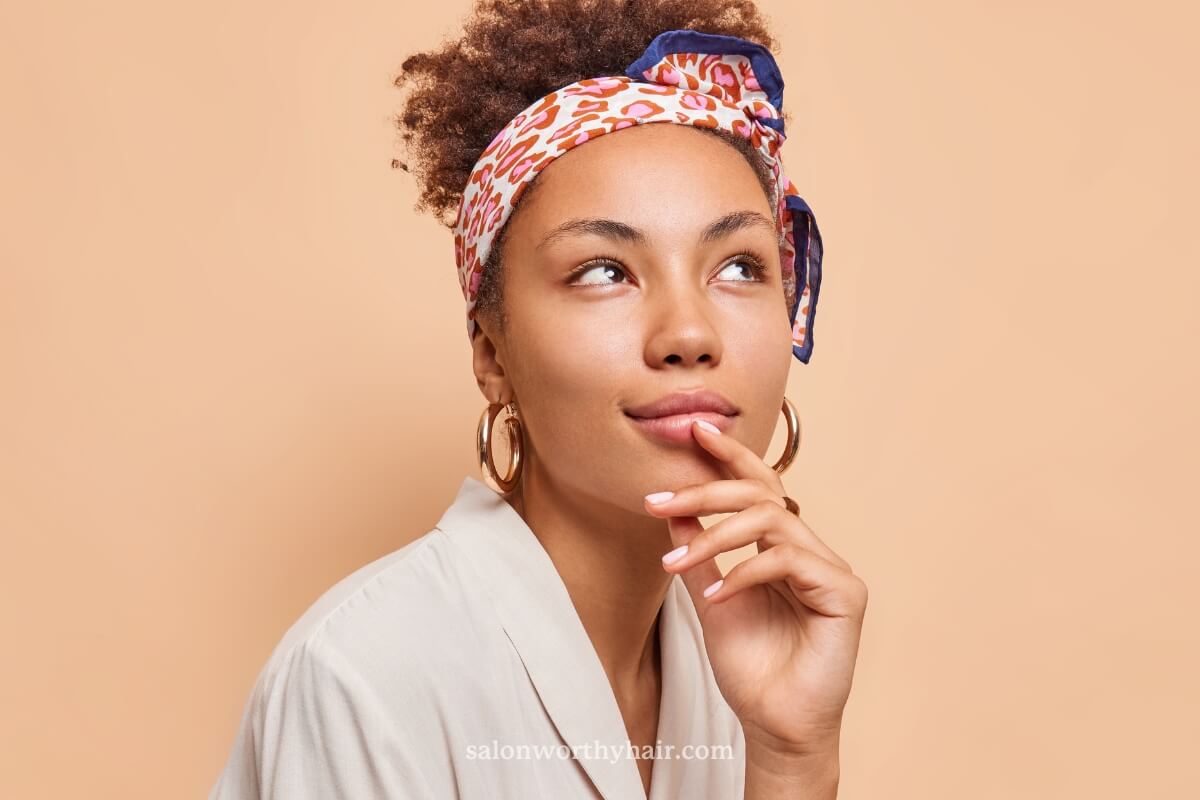
Headbands are easier to wear and more versatile than other protective hairstyles that require tension and twisting. Depending on how you position the headband, you can create various hairstyles, from a half-up and half-down look to a low bun or chignon. Experiment until you find your comfy sleep-in style.
9. Overnight Plopping
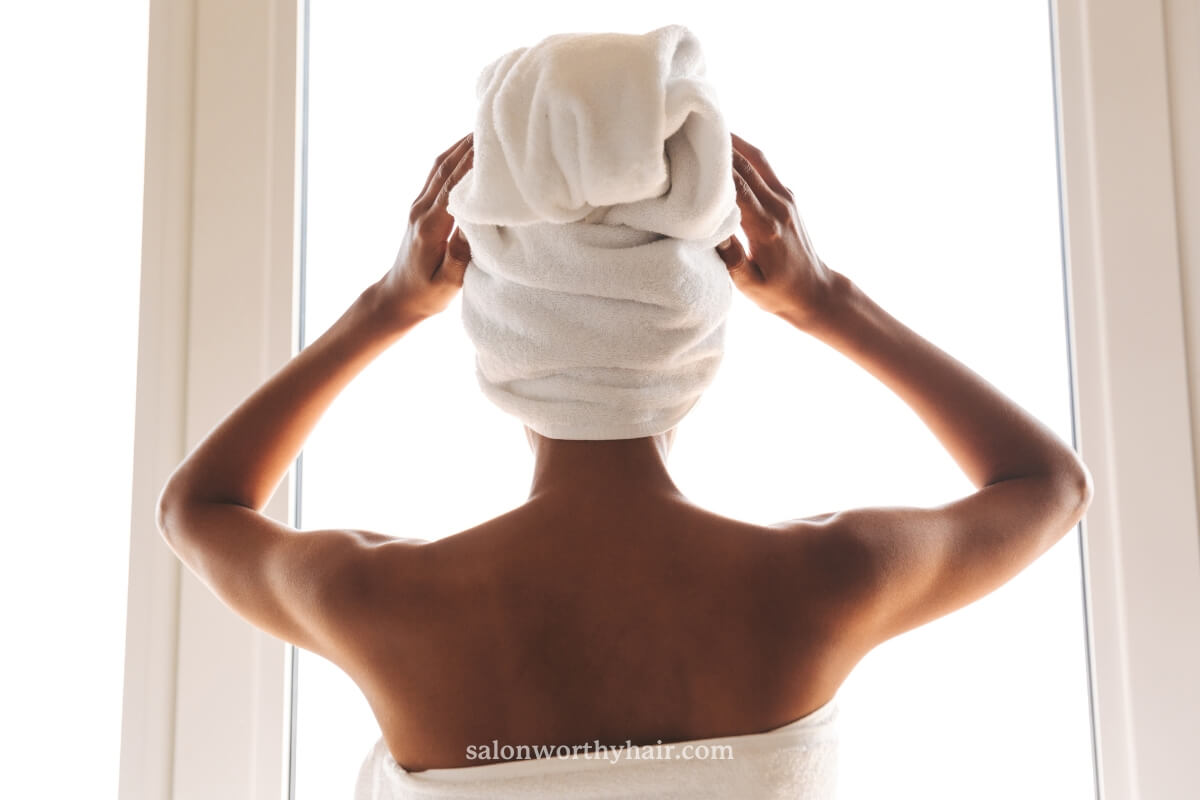
Overnight plopping is a method that involves wrapping wet hair in a cotton T-shirt or microfiber towel to promote curl formation and reduce frizz.
The hair is wrapped into a “plop,” secured with a hair tie or clip and left to dry overnight.
This method works for people who wash their hair at night and don’t have time to wash and style their hair in the morning. Plopping overnight encourages curl formation and prevents frizz, while the hair dries as you sleep.
Whichever hairstyle you choose, it’s generally a good idea to wrap curly hair at night to help it maintain its shape, prevent tangling, and reduce frizz.
You can add extra protection by using a silk bonnet overtop. But that’s up to you.
Here’s how to sleep with a silk bonnet on curly hair at night:
- Put on the bonnet:Slide it over your head, ensuring it covers your entire head and hairline. Adjust the bonnet to fit comfortably and securely without being too tight.
- Tuck in any loose strands:If loose strands of hair are sticking out of the bonnet, tuck them in gently to prevent tangling and frizz.
- Sleep comfortably:Once the hair bonnet is in place, you can sleep comfortably, knowing that your curls are protected and will maintain their shape throughout the night.
Sleeping With Wet Curly Hair – Considerations
As a curly girl, I understand the struggle of not having enough time to dry our hair before bed. Sleeping with wet hair in a plop is convenient, but it may not always work for everyone.
Overnight plopping can lead to flat and shrunken curls in the morning for some, especially if you sleep on one side.
Depending on your hair’s porosity, it can hold on to excessive water, which can weigh down and weaken each strand, causing the hair to stretch and loosen.
Here are some tips to mitigate such problems and wake up with defined and voluminous curls:
- Don’t sleep with soaking wet hair.
- Damp hair is okay, but to help define your curls and reduce frizz, use a leave-in conditioner to hold them together.
- Do not blow dry your hair on high heat to rush the drying process.
- If you must blow dry – use a diffuser.
Be gentle with wet hair to avoid breakage and frizz.
How to Refresh Your Curls in the Morning
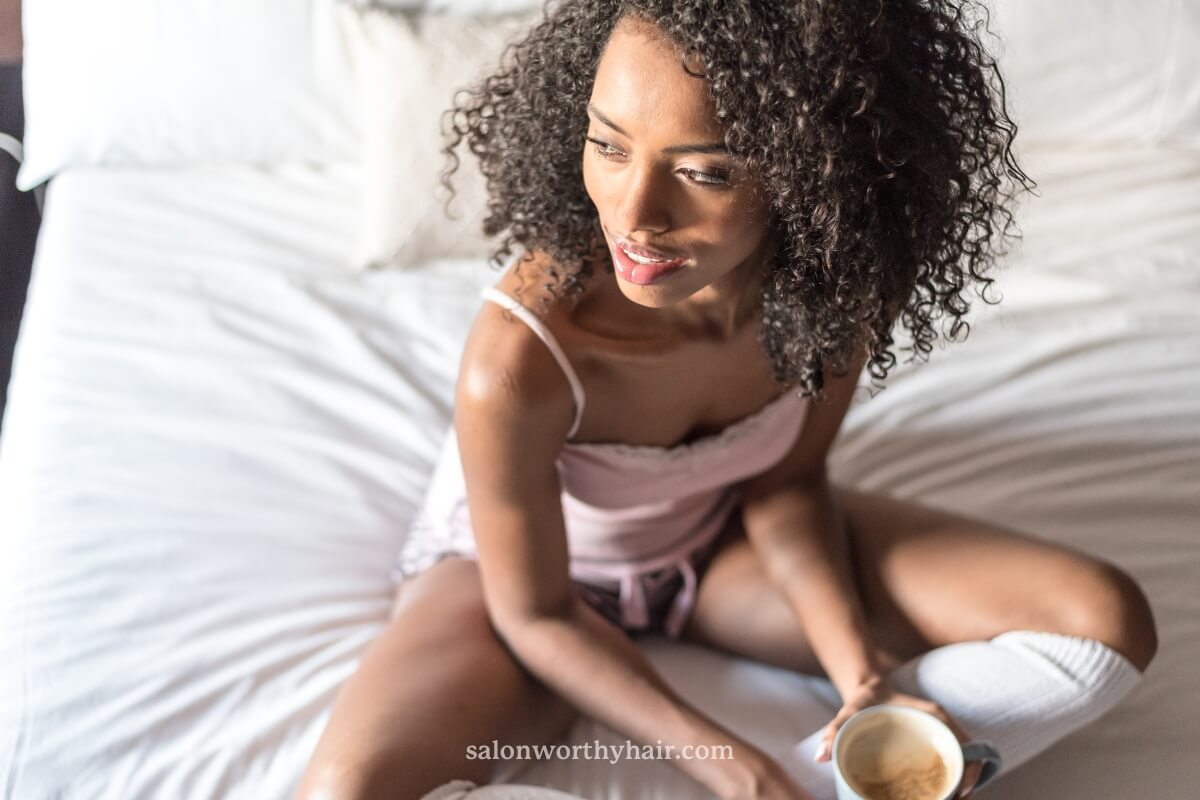
Refreshing your curls in the morning helps to reactivate and reshape them so they look their best.
Here are 3 easy ways to do it:
Spritz with Water
Use a spray bottle to mist your hair with water until it’s slightly damp (not soaking wet). Scrunch in a small amount of leave-in conditioner or curl cream to reshape them and allow the curl pattern to set.
Use a Curl Refreshing Spray
Using a curl-refreshing spray in the morning helps to rehydrate your curls and reactivate any styling products you applied the night before, giving your curls a boost of hold and definition.
Simply spray and scrunch your curls to reactivate them.
Use a Curl Foam
If your curls tend to be very dry in the morning, use a curl foam to plump them. Foams typically contain moisturizing ingredients, such as glycerin or aloe vera. They increase fullness in the hair by creating space between the strands with their aerated formulas.
Try one if you have type 2 or type 3 hair. It won’t be as effective for type 4 (coily) hair as this hair type is too dense.
Hair Products to Consider
Troubleshooting Frizzy Curls and Flatness
If you still experience frizz or flatness despite following the above tips and techniques …
Read This: How to get rid of frizzy hair overnight.How Are You Sleeping With Your Curls?
Have you figured out how to sleep without ruining your curls yet?
I follow a lot of discussions on Reddit, and I can tell you there are so many different ways and opinions. But most people agree that it’s better to sleep with your hair up if you have curly hair.
Ultimately, there is no right and wrong way to go about it. It all depends on your lifestyle, commitments, and what works for you.
There is no harm in experimenting and tweaking your haircare routine accordingly because curly hair is the most complex thing in the universe!
About the Author
 Kassidy Ward
Kassidy WardKassidy Ward is our curly girl expert and has been following the Curly Girl Method for over 3 years. She's tried just about every product and technique out there to get her curls to cooperate and is always on the lookout for new products to try.
She's also a sucker for free products, which is why she's relentlessly reaching out to manufacturers with her unique persuasive skills. 9 out of 10 times, she wins!

